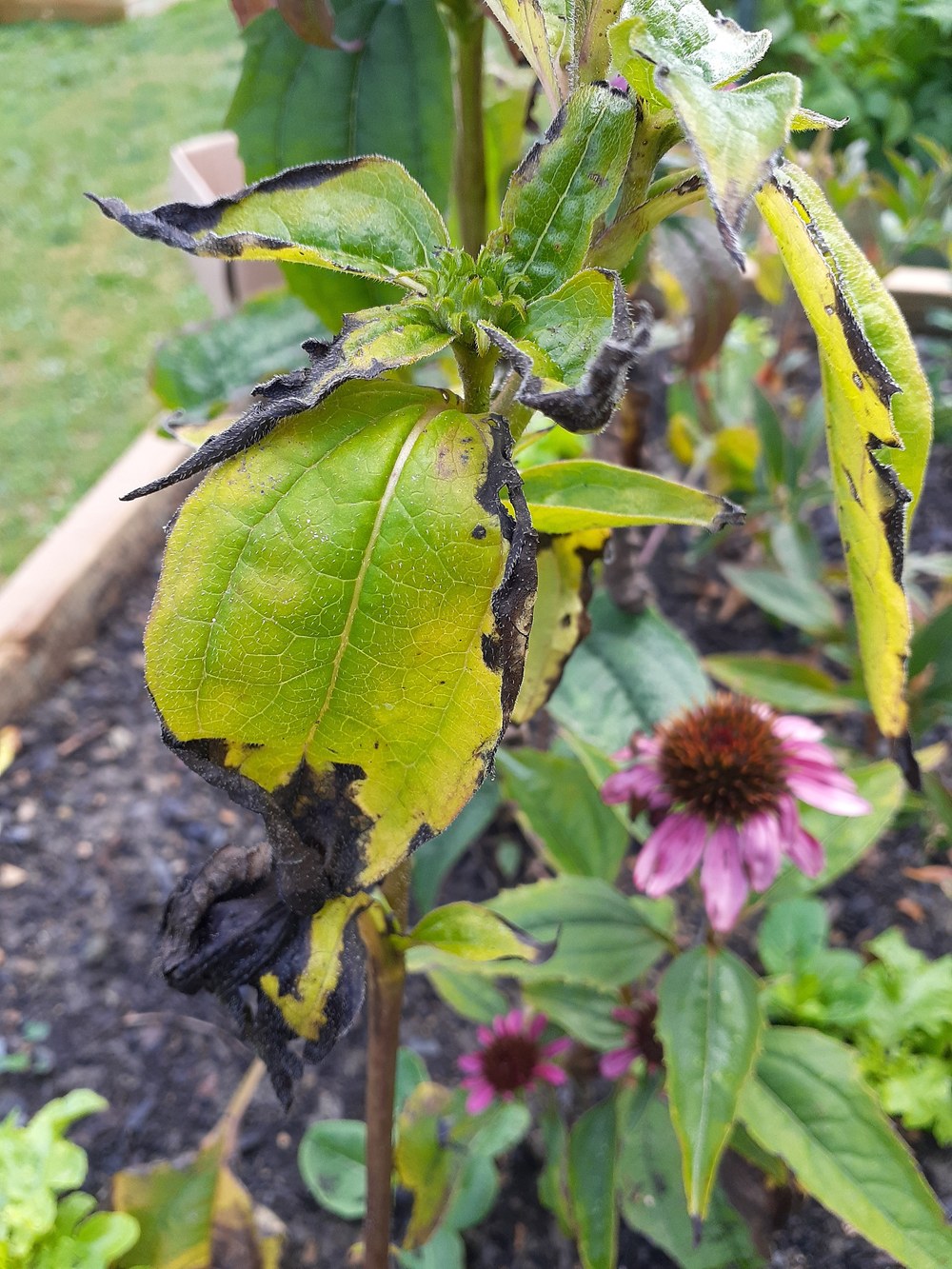Posted: September 13, 2022
According to the National Integrated Drought Information System (NIDIS), over 96% of Potter County is experiencing "Moderate Drought" conditions.

Photo credit: Leona Smith
In this stage, irrigation use increases; hay and grain yields are lower than normal; honey production declines, and wildfires and ground fires increase. June 2022 was the 12th driest on record for the past 128 years. We can all testify to the effects of the lack of rain on our own gardening experiences.
Water is essential for healthy plant growth. The movement of water from the soil through the roots and up into the leaves is part of the process of transpiration within each plant.
Drought has both short-term and long-term effects on plants:
- Damage is first apparent in the wilting, yellowing, and dropping of leaves. Leaves may curl and look scorched.
- Plants will eventually begin to show signs of decline as the tips of branches become dry and brown.
- New growth will be stunted.
- No amount of watering can undo it when damage is severe.
Drought related stress increases susceptibility to disease infections and insect invasions.
Early morning is the best time to water as the rate of evaporation from soil is lower at that time.
Apply water slowly to the base of plants. This will reduce water usage by about 50%. The soaker hose or "leaky pipe" is a hose that allows water to seep out all along its length at a slow rate. Apply irrigation under the mulch if possible.
Critical watering periods for vegetables. You can target the timing and amount of water to add. As a rule of thumb, water is most critical during the first few weeks of development, immediately after transplanting, and during flowering and fruit production.
Control weeds. Weeds can out-compete garden plants for water. Pull them when they are small, making sure to remove all the roots. When returning to your garden after a time away, be sure to pull the weeds that are ready to flower or go to seed first.
Save rainwater for your plants. Save as much rainwater as you can by putting a rain collector under the downspouts from your roof. In the house, save the water that you run from the tap while you're waiting for the temperature to get hot or cold. In Pennsylvania, we cannot use water that has been in contact with people (bath water, shower water, or dishwater) to water our plants.
Mulch and mulch properly: Use 1 to 2 inches around vegetable plants. Mulch will keep the soil temperature cooler and it will keep moisture in the ground rather than letting it go out into the environment. By using an organic mulch, you will also be adding organic material and nutrients to the soil. Mulching minimizes evaporation of water from the soil surface, reducing irrigation need by around 50%. Grass clippings make excellent mulch for the vegetable garden. Apply fresh clippings in thin layers (up to 1/4 inch thick) and allow each layer to dry before adding more. The clippings quickly dry down and additional layers can be added weekly. Do not place fresh clippings in thick piles, as they will mat, decay, and cause odors. Do not use clippings from lawns that have been treated with herbicides or other pesticides in the past month. A couple of sheets of newspaper may be used under the clippings to help control weeds. Do not apply newspapers more than a couple of sheets thick, or a soil carbon to nitrogen imbalance may occur. Glossy print materials should not be used since their inks may not be soy-based like newspapers.
Black or colored plastic mulch conserves moisture and also increases soil temperatures. They are used on tomatoes, peppers, eggplants, and vine crops in cooler areas. Lay down plastic early in the season so plant growth shades the plastic from extreme summer temperatures. Do not apply plastic in mid summer.
Plant in blocks, rather than rows. This creates shade for roots and reduces evaporation. Control weeds, as they are competing with the vegetables for water. Group plants with similar water needs on the same section of irrigation. Cucumber and zucchini and squash, for example, require similar water applications. Check the soil for moisture before you water. Irrigate when the top 2-4 inches of soil is dry to the touch. This is especially important if using mulch, where water can be held in the soil for longer periods of time. Protect plants and soil from wind to reduce evaporation.
References:
Loos, M. T. Drought Resistance in the Home Landscape, Ohio State University Extension Fact Sheet.
Penn State Master Gardener Manual
Penn State Extension How to Garden During Drought Conditions
UC Marin Master Gardeners Drought
Colorado State University Extension Home Vegetable Garden Management During a Drought in Colorado

